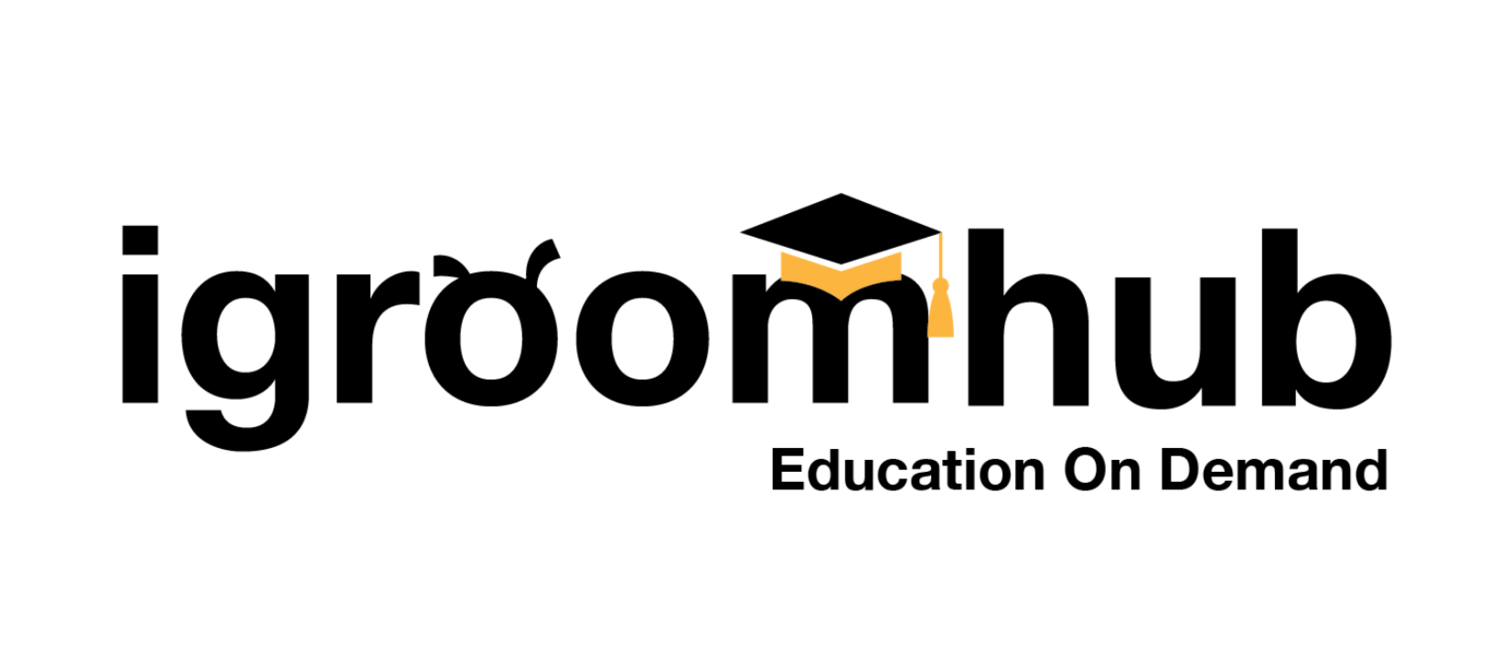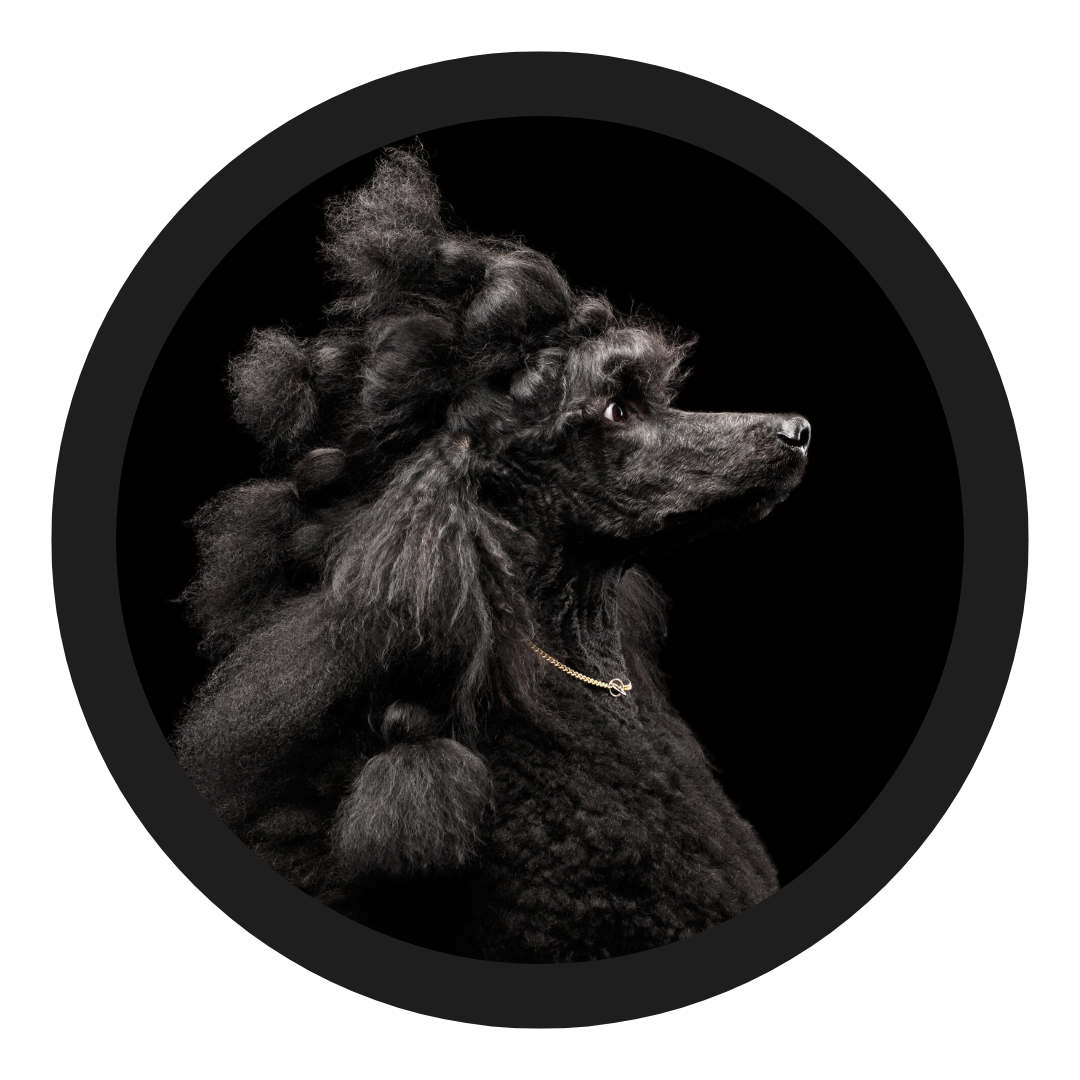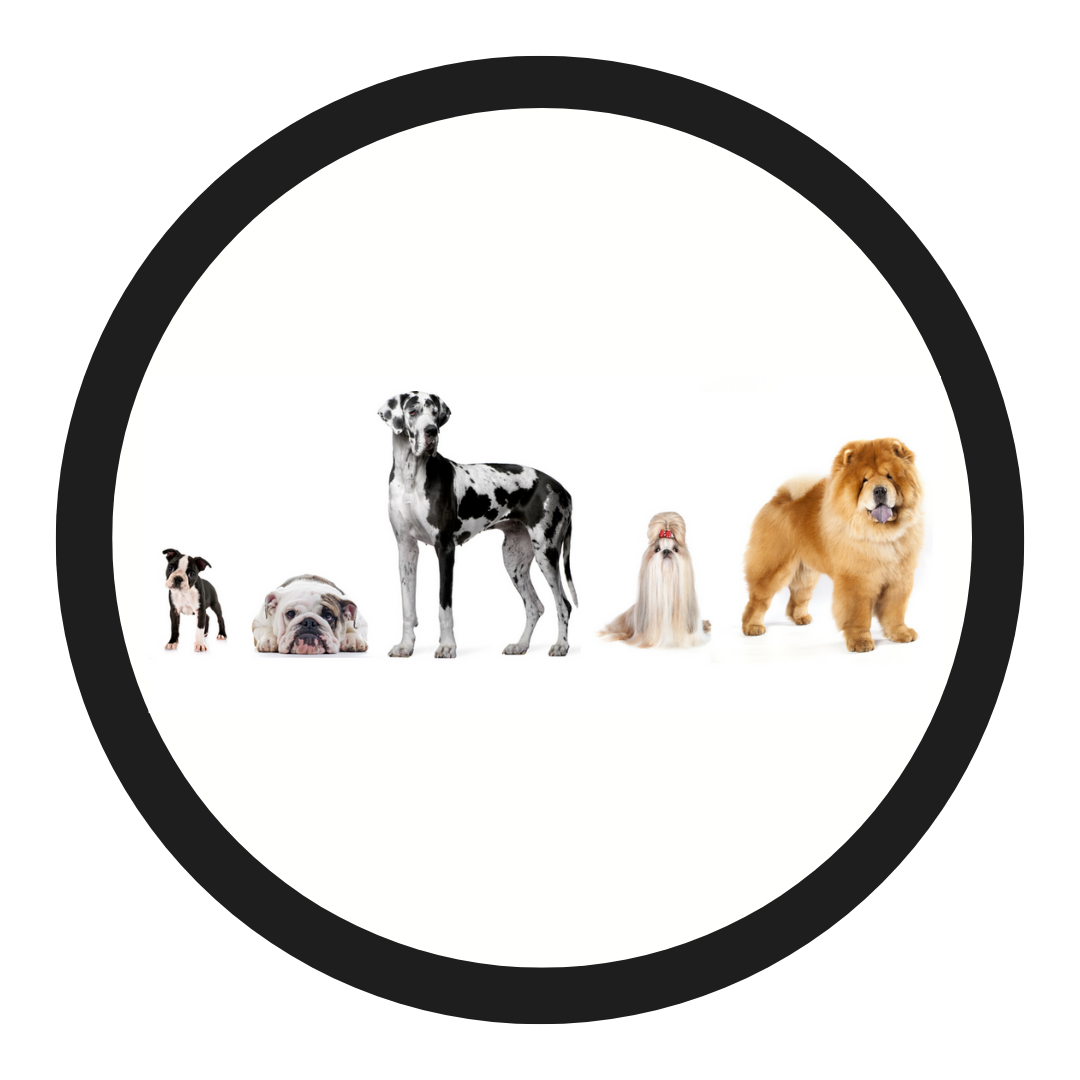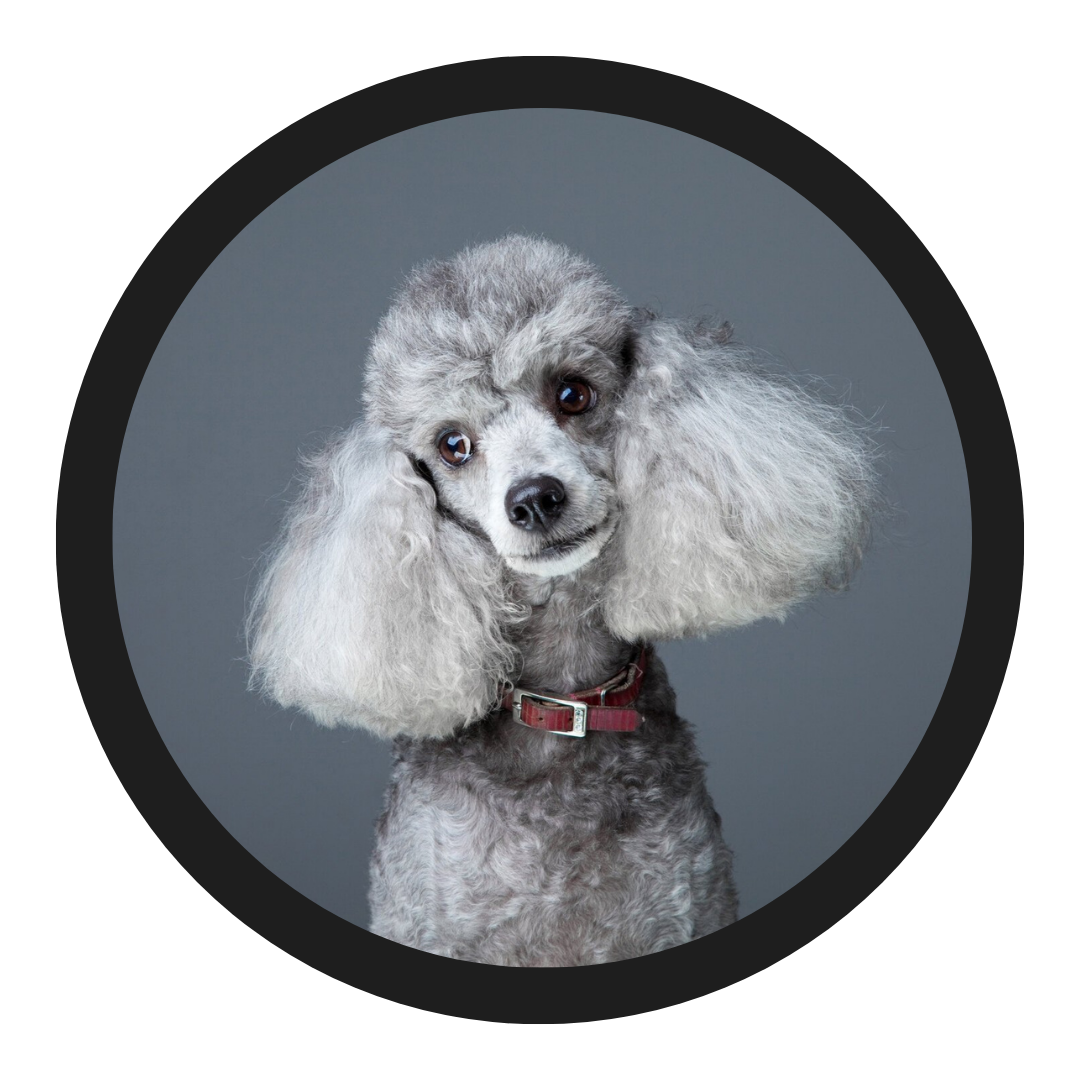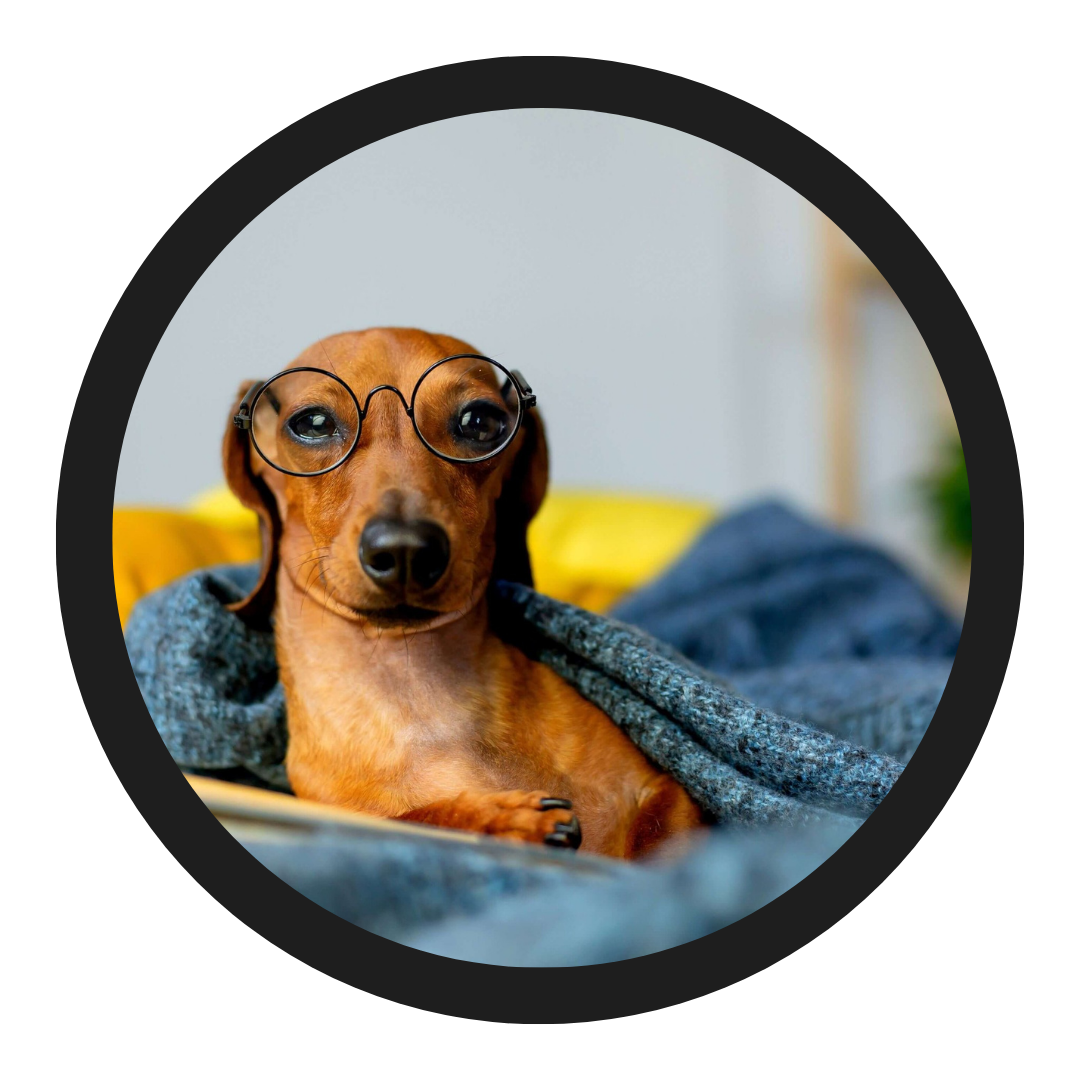ADVANCED GROOMING TUTORIALS
The Puppy Poodle Trim
with Allison Foley
Setting up for success
We are going to recommend that you groom your puppy on a secure table with a non slip surface. Use a grooming arm but this is the time to start training your puppy not to lean into the arm when being groomed. It is merely there for safety reasons. Practice now “shaping your poodle” on the table as described in the video series “Poodle Prep”.
Your puppy should be bathed, dried and combed out. As per instructions in “Poodle Prep”. Your puppy should also have it’s face, feet, tail and belly clippered.
A very unruly puppy will be harder to trim but also a reality. In this case a friend to help will make things turn out a little better.
An introduction the the Puppy Trim
POODLE PUPPY TRIM - Understanding how the Puppy trim "fits"
Overview of the puppy trim
When we look at a poodle puppy trim we want to be careful and make sure you are trimming your puppy as “square” as possible. The things to watch out for. Do not add hair to the back of the pins bones to make a big dramatic “Shelf” this just adds length to your puppy’s body. Do not build a big chest on your dog for the same reason. Do no trim any hair off the back of the front legs or the front of the back legs. Leave as much hair there as possible to close the gap between the legs and make the puppy look shorter backed.
I like to think of the puppy trim as following the natural lines of our puppy without exaggeration.
Understanding how the Puppy Trim ‘fits’
Know your puppy's anatomy before you start
The most important thing when trimming your Poodle, is to know EXACTLY what you want it to look like. I am trying to help you eventually have “Brand”, so that all of your trims look the same. This shows the world exactly what you want your poodle to look like. I show some examples here. If you read your standard and have a clear vision in your head of what you want, your poodles’ silhouette to look like, you will have greater success. People often come to me and say that they can’t make their poodle look how they want. When I ask what they want it to look like, they don’t know. Know what you want your poodle to look like. Find photos of Poodles that represent this to you (hopefully from the same family) and put those up in your grooming space. Refer to them over and over. Take photos of your own poodle trim and “fix” it with a marker until it closely matches your ideal Poodles. This is one way to have something to aim for.
Once you have this picture in your mind, be very aware of where your dog strays from the ideal, and make up for this with your grooming talents.
Trimming the Front
The first cut, trimming the layback of shoulder - Start with the Layback of the shoulder
Clip the neck line of your poodle to “mimic” the layback of the shoulder. By this we mean to make a line that approximates the ideal layback of the scalpula. From the front of your poodle lie your shears on this clipper line and scissor straight out from this line.
The next line is the return of the upper arm. From the point of shoulder make a rounded line “mimicking” the return of upper arm from the point of the chest that is furthest out down to the top of the front leg. Do not scissor into the leg hair.
Trimming the Front Leg
Now from the top of the front leg trim the hair down to the top of the foot. You want there to be a slight definition at the of the top of the leg but not a noticeable line. The hair from the top of the foot is beveled and blended into the leg.
Trimming the topline and setting the "V"
Trimming the rear-the top line
Before trimming the rear you are going to make sure the base of your puppies tail is shaved in a V with the point of the V going towards your puppies head. Holding your puppies tail down you will scissor the hair from pin bone to approximately two fingers in front of the hip bones in a straight virtually flat place from left to right. You will need to comb several times between scissoring This line will not develop nicely without several passes of the scissors with combing in between. As you get to just in front of the hip bones begin to scissor the hair going up towards the head until you reach about the rib area.
Go the other side of the puppy and make sure this flat line is even from every angle.
Especially in North America we do not want to develop a “waist” on our puppy trims.
Trimming from the pin bone to the bend in stifle
Trimming the pin bone and back of leg
With your puppy standing four square and balanced on the table. Pick up your puppies rear leg and move is as if in a walking motion. Note where the back of the leg bends across from the stifle. This is the end point for this part of the trim. Standing so that you are looking at your puppy’s side profile you are now going to trim from the pin bone to the bend in the back of the leg. Trim all the way across the width of the leg from pin bone to the bend. You are combing between passes of the scissors and it will take several passes to get this area trimmed properly. Repeat on other leg.
Blend the flat section you did across the back into this new line at the pin bone. Repeat on other leg.
Trimming the letter "A" in the rear
The Letter A, outside of the rear leg.
With your puppy standing four square and hocks at a ninety degree angle to the table stand at the rear of your puppy. Comb the hair evenly down the outside and inside of both back legs.
Hold the puppy’s tail up. Using the tail as the top of the “A” you are now going to scissor in a straight line from the tip of the tail to the bottom of the outside of the foot in a nice straight line that resembles the letter “A”.
Comb and scissor the outside of both legs alternately so that you get them even. Comb and scissor repeatedly until you have a properly scissored line. Once you have this line move your scissors forward about 2 finger widths on the legs towards the head. Slightly point the scissors in towards the tuck up and repeatedly scissor this line, combing in between passes of the scissors and alternating legs. Pick up the puppy’s foot and gently shake the leg to mimic the hair movement of the puppy in motion. When you do this you usually see where more hair needs to be tapered off to get the desired effect. This is where personal preference and your artistry comes into play.
The Letter A, the inside of the rear legs.
Once the outside of the rear legs are done it is now time to do the inside. In all my poodle trims, the Puppy trim, Continental or English Saddle the weight of the rear legs is on third of the hair on the inside of the leg and two thirds of the hair on the outside of the leg. There are several reasons. Most judges like to see a dog not move too “Close” behind. By leaving too much hair (I think even half the hair is too much) you are giving the illusion that your dog/puppy moves too close behind. Add into that that the hair is moving as the dog is in motion I believe we need to make this area as tapered and clean looking as possible. I always weight the hair on all of my trims in all 3 varieties following the one third, two third rule.
Find the bone at the back of the leg, this is your divider. Look at the amount of hair you have on the outside of the puppy’s leg and trim the inside so that the hair there is half of what it is on the outside of the leg. Follow the same “A” pattern. You are trimming from high up inside the leg to the inside of the bottom of the foot. When trimming boys be aware there are “jewels” there and hold them out of the way of the scissors. Alternate legs so that the trim stays even. Scissor this line several times combing in between until you have the desired effect. When this is complete move your scissors forward about two finger widths and point the tip of your scissors towards the outside of the leg to taper the inside line.
Pick up your puppy’s foot and gently shake to mimic the leg in motion and again trim this line until it looks neat and clean.
Round and taper the hair at the top of each foot into the leg you have trimmed
Finishing the back of the Back Leg
Stand at the side of your puppy looking at the profile. From the bend in the back of the leg to the top of the hock you want a nice gentle swoop that shows off your puppy’s angulation. The younger the puppy the more you have to use your imagination and artistic view. There will not be a lot of hair to work with depending on the age of your puppy.
I like to use either a blender shear or my curved shears backwards with the outside of the curve matching the bend in the leg. At this point it is better to err on the side of leaving a little extra hair here until you can view your puppy on the ground and make last minute adjustments. With that in mind lightly trim the hair from the bend in the leg to the tip of the hock showing the angulation of your puppy.
Then trim from the top of the hock straight down to the table at a ninety degree angle.
POODLE PUPPY TRIM - Putting it all together
Drawing the "X" for the tuck up
The position of the tuck up is very important. Standing looking at your puppy with the puppy standing four square imagine that your puppy is standing in a box. Draw the box with your mind. Now with your finger draw a giant “X” within this box so the axis of the “X” criss crosses your puppy.
The highest point of the tuck up will be just behind where the “X” crosses. From the highest point of the tuck up to the top of the front of the rear foot is a straight line.
Often in young puppies there the first few inches of this line there is no hair. (see diagram) So be patient it will grow. DO NOT trim the rest of the hair to match where the hair in the tuck up is missing. This is a common mistake and will make your puppy look longer backed.
Once you have established the highest point of the tuck up blend from here into the back leg . The blend again from the highest point of the tuck up into the underline of your puppy.
I often will put my scissors at the highest point of the tuck up and then go underneath the puppy’s body to the opposite side and make a small cut with my scissors to mark where the highest point will be on the opposite side.
Finishing the underline
Trimming from the tuck up to the elbow
From the highest point of the tuck up you are now going to trim the hair in a straight line from here to the elbow. Trim a guideline here and then continue all the way underneath your puppy’s body. Be sure the underline blends into the overall round shape of the puppy’s body.
You will have to alternate combing the hair and scissoring the hair all the way under the puppy’s body to get the desired effect. I find it useful to comb the hair underneath towards the rear of the puppy and then scissor moving the scissors forward to get the desired effect.
Once you are happy with this line then life up the puppy’s front leg in a forward motion and blend the underline into the chest line between the puppy’s front legs.
At this point you should also trim off any offending armpit hair that looks messy or unkempt under the elbow. With the front leg outstretched trim the armpit hair to match the underline.
From the front, be sure the trim is round
Keeping Roundness in your trim
Remember that the puppy trim should be round and not slab sided. It is very easy to make a puppy slab sided especially when dealing with a very young puppy that doesn’t have a lot of hair.
With your puppy standing four square stand at the front of your puppy and see that the trim is round from the “spray up line” to the underline. Still standing at the front trim the hair in this area along the body to the tuck up moving your scissors in an arc to keep the roundness of the trim.
The puppy on the ground
Now that your puppy is trimmed it is time to look at it on the ground. Put a show leash on your puppy and have someone trot it outside. Look at the trim and note if you see too much hair moving in a distracting motion. Often I find my puppies may have to be taken down a size or two depending on their age and amount of hair.
One problem spot to look out for is the “ridge” along the side of the trim that is in the area from the pin bones to about the last rib of your puppy on the outside edge of the trim. I use the word “ridge” because if there is a ridge there it must be blended both into the legs and the topline. I find this “ridge” is most noticeable when the puppy is moving.
Conclusion
The Puppy Trim is the trim with the most room for artistic license and the trim that varies the most from person to person and puppy to puppy. Especially in North America be aware that often too much exaggeration in the trim is not tolerated. There should never be a “waistline” in your puppy’s trim.
Keep the trim as close to the natural lines of the puppy.
Remember that very young puppies or puppies that have slower growing coat you need to let the hair grow where needed and not trim off hair to match the shorter areas. This will result in a trim that is far to tight and usually unflattering.
Use your artistic license and remember to let your puppy have breaks as needed during the trimming process.
